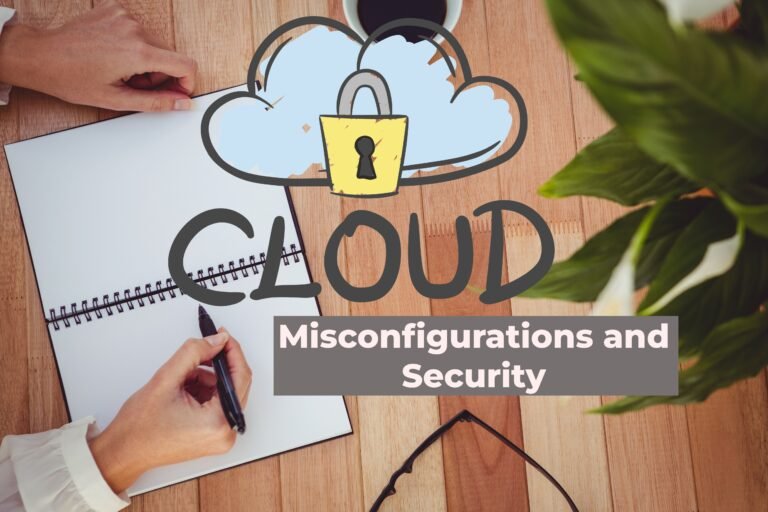The Dark Side of Connectivity: TruConnect’s Data Breach Uncovered
In an era of unparalleled connection and technological breakthroughs, the dark side of the digital revolution is not unheard of. The dangers of our networked society have come into sharp relief with the recent TruConnect data breach, a telecommunications business well-known for its mobile services.
Introduction
Definition of Data Breach
In the field of cybersecurity, a data breach is defined as the unapproved access, acquisition, or release of confidential data, which frequently results in possible harm to both individuals and businesses.
Importance of Data Security
As our lives become more and more interconnected with digital platforms, the need to safeguard personal and sensitive data cannot be emphasized. A data breach can have far-reaching effects on people’s lives who have their personal information compromised by unauthorized access.
TruConnect’s Data Breach
Overview of TruConnect
TruConnect is a well-known brand in the huge world of telecommunications, offering internet and mobile services to a wide range of customers worldwide. TruConnect was founded to seamlessly connect people. Since then, it has been a major player in the market, providing dependable and reasonably priced communication solutions. Millions of people have benefited from its services, which promote connectedness and close communication gaps.
Due to TruConnect’s dedication to offering accessible mobile services, a sizable user base consisting of people, families, and companies has been attracted. The company has established itself as an excellent choice for individuals looking for affordable and effective communication solutions by providing a variety of plans and services.
TruConnect’s generally excellent reputation has been clouded by the most recent data leak. Users who gave the corporation access to their data now have to deal with the disconcerting possibility that unauthorized parties may have it. The effectiveness of TruConnect’s security procedures and the degree of user data protection are called into doubt because of this compromise.
Nature and Scale of the Data Breach
The TruConnect data breach is not a small-scale event that should be overlooked. It involves a significant amount of user data, from sensitive details like financial data to more basic personal information. There are serious risks associated with this widespread hack for anyone who is impacted, far beyond the short-term inconvenience of having to change passwords.
When one considers how many users were affected, the scope of the compromise becomes clear. Due to the wide-ranging nature of TruConnect’s services, a large range of users are affected by the incident. People from all walks of life could become victims of this breach, regardless of where they live—from metropolitan to rural areas—illustrating the far-reaching effects of insufficient data protection.
The scope and severity of the attack highlight how urgently the telecommunications industry as a whole, including TruConnect, needs to review and strengthen its cybersecurity protocols. This event at TruConnect should serve as a wake-up call for the whole industry, as users’ responsibilities to protect their sensitive information increase as they become more digitally linked.
How the Breach Occurred
Vulnerabilities in TruConnect’s System
Since a cybersecurity network is only as strong as its weakest link, TruConnect’s system flaws served as a point of entry for the bad actors responsible for the data breach. Cybersecurity specialists investigating the event have found gaps in TruConnect’s digital architecture, highlighting places where the business’s security was weak.
Unpatched systems and obsolete software present a serious risk. Regular updates and patches are essential in today’s fast-paced technology environment to address newly found security problems. As the TruConnect hack made clear, outdated software leaves doors open for hackers to take advantage of known weaknesses. The event serves as a warning to businesses in several sectors regarding the significance of regular software upkeep and security updates.
The hack also revealed weaknesses in TruConnect’s network security. The hackers exploited vulnerabilities and weak areas in the network design to get past the company’s protections. This emphasizes the requirement of proactive measures and continuous monitoring in addition to strong network security protocols to find and fix possible vulnerabilities before they can be exploited.
Methods Used by Hackers
The hackers in the TruConnect data breach used a variety of highly skilled techniques. Phishing assaults were one well-known strategy, in which employees were deceived by malicious links or emails into revealing personal information or by deceptive emails or messages. This social engineering technique takes advantage of human weaknesses and highlights the importance of thorough employee training to identify and foil such attempts.
The hackers also employed the technique of taking advantage of vulnerabilities owned by third parties. In today’s networked digital world, businesses frequently depend on software and services from third parties. These dependencies, though, may present further hazards. The TruConnect incident serves as a clear lesson for businesses to thoroughly inspect and secure not only their internal systems but also any other systems they connect to their business. The hackers took advantage of weaknesses in third-party systems.
Impact on Users

Personal Information Compromised
The TruConnect data breach has consequences that go beyond the internet because the compromised personal data puts impacted users at serious risk. Contact details, names, addresses, and even more private information, such as Social Security numbers and bank account information, have gotten into the wrong hands. Users are now at risk of identity theft, financial fraud, and other criminal acts that could have long-term effects due to the breach.
The discovery that their data is no longer secure causes many people more than simply irritation; it is an adequate cause for alarm. In a time when digital privacy is crucial, the hack has destroyed customers’ faith in TruConnect to protect their private information and raised concerns about the broader effects of such occurrences.
Potential Consequences for Affected Individuals
The consequences of the TruConnect data breach have the potential to be extensive and profound for individuals impacted. In addition to the immediate inconvenience of changing passwords and keeping an eye on bank statements, those who are impacted by identity theft may have to deal with the challenges of identity theft resolution.
Financial losses are a real and urgent issue since hackers using stolen financial information may carry out illegal activities, empty bank accounts, and accrue debt in the victims’ identities. It may take a long time and a lot of money to recover these damages, as well as legal counsel.
Furthermore, a data breach’s damage to a person’s reputation may have consequences that last. Victims may experience effects on their personal and professional lives as they deal with the consequences. It becomes an important but difficult endeavor to rebuild confidence in financial institutions, companies, and even within their social networks.
TruConnect’s Response
Timeline of the Company’s Acknowledgment
An essential component of assessing TruConnect’s dedication to accessibility and user confidence is the timeframe in which the company acknowledged the data breach. The speed at which a business reacts to a data breach can have a big influence on how much harm is done and how quickly user confidence is restored.
The sequence of events in the instance of TruConnect starts when the breach is found. Proactive monitoring systems of a corporation are demonstrated by their ability to quickly detect security incidents. Following the discovery of the breach, TruConnect proceeded to evaluate the scope of the compromise, identifying the particular data types impacted and the possible dangers to users.
In the acknowledgment step, users who were impacted were contacted. To preserve confidence, communication must be timely and transparent. TruConnect acted quickly to notify users, providing information on the type of breach, the precise data that was compromised, and the efforts being taken to fix the situation.
Measures Taken to Address the Breach
Beyond simply acknowledging the breach, TruConnect took strong action to remedy the immediate consequences and prevent similar occurrences in the future. The business took several actions to improve its cybersecurity posture and contain the breach.
Immediate patching of the vulnerabilities that allowed the intrusion to happen was one important precaution. System security was a top priority for TruConnect, and it made sure that any vulnerabilities were fixed right once to stop further illegal access. The prevention of comparable events from happening again depends heavily on this proactive strategy.
There was constant communication with the impacted users, giving them updates on the investigation’s status and the security precautions that were being put in place. Rebuilding confidence requires openness about the actions taken to address the breach and protect user data.
Lessons Learned
Importance of Cybersecurity for Companies
The TruConnect data leak is a clear reminder of how crucial cybersecurity is for businesses functioning in today’s networked digital environment. Organizations need to prioritize strong cybersecurity procedures to protect their users and preserve confidence, especially as technology progresses and cyber threats grow increasingly complex.
This instance shows that cyber dangers affect all companies, no matter how big or what industry they are in. Repercussions from insufficient cybersecurity measures were experienced by TruConnect, a major participant in the telecommunications industry, emphasizing the fact that cybersecurity is a need rather than a luxury.
Investing in state-of-the-art cybersecurity infrastructure is a proactive measure to protect user data and preserve the integrity of digital ecosystems, not only a compliance issue. Businesses need to set aside funds for thorough security assessments, frequent system updates and patches, and staying ahead of new threats.
Steps to Prevent Future Breaches
Businesses can improve their cybersecurity posture and prevent future intrusions by taking smart measures after learning from the TruConnect data incident. The most important fundamental precautions are to always keep software updated and to fix vulnerabilities as soon as they arise. Frequent security audits can find and fix system flaws, lowering the possibility of an attack.
Strong user authentication techniques, such as multi-factor authentication, can be implemented to provide an additional line of protection against unwanted access. It is essential to inform staff members and users about potential cybersecurity risks, such as phishing attempts, to stop hackers from using social engineering techniques.
Companies should also promote a culture of cybersecurity responsibility and knowledge. Programs for employee training should place a strong emphasis on the need to follow security procedures and report any suspicious activity right away. The IT department is not the only entity in charge of cybersecurity; everyone in the company must participate in this team effort.
The Dark Side of Connectivity
Risks Associated with Increased Connectivity
The TruConnect data breach highlights the dangers that come with more connection and exposes the dark facets of our hyperconnected society. Data breaches are more likely as more areas of our lives become interconnected with digital platforms, increasing the attack surface for cybercriminals.
Modern technology is networked, which facilitates the continuous flow of information and improves convenience while increasing vulnerability. The growth of connected gadgets, such as wearable technology and smart homes, opens up multiple entry points for cyber attacks. A difficult illustration of how these access points might be used to jeopardize sensitive data on a broad scale is the TruConnect breach.
Furthermore, customers run the possibility of experiencing dangers due to their increasing reliance on internet platforms and cloud services. These services centralize a lot of personal data, which makes them appealing targets for cybercriminals even as they provide accessibility and convenience. The TruConnect event highlights the need for both individuals and businesses to exercise caution when it comes to the possible risks that come with embracing the interconnectedness of the digital era.
Balancing Convenience and Security
The difficulty is finding a fine balance between the convenience that comes with more connectivity and the necessity of continuing to implement strong security measures. Businesses must innovate as technology develops to provide smooth, user-friendly experiences while also giving user data privacy a top priority.
To achieve this balance, customers must make knowledgeable decisions about the products and services they utilize. Understanding the security attributes of commodities, exercising vigilance against plausible hazards, and proactively engaging in the protection of personal data are vital measures. On the other hand, businesses need to incorporate safeguards for privacy and take a proactive approach to addressing potential vulnerabilities in the design of their products and services.
The TruConnect breach of data makes us all stop and consider how we use the internet. It pushes consumers and businesses to understand the mutually beneficial link between security and convenience and how one might be compromised at the other’s expense.
Protecting Yourself Online

Tips for Enhancing Personal Online Security
Improving personal online security is now more important than ever in the wake of the TruConnect data hack. To protect their sensitive data and digital identities from any attacks, users need to take preventative action. The following are crucial points to improve individual internet security:
- Strong, Unique Passwords: Construct intricate passwords for your virtual accounts, steering clear of readily readable combinations. Make use of a combination of numbers, symbols, and upper- and lowercase letters. Stay clear of using the same password on several sites.
- Enable Two-Factor Authentication (2FA): Whenever possible, activate 2FA for your accounts. This extra security layer makes it much more difficult for unauthorized people to access your accounts by requiring a second form of authentication, such as a code texted to your mobile device.
- Regularly Update Software: Make sure your operating system, antivirus program, and other programs are current. Security patches for known vulnerabilities are frequently included in regular updates.
- Beware of Phishing Attempts: Exercise caution when opening attachments or clicking links in emails from senders you don’t know or find questionable. Phishing attempts frequently employ deceptive techniques to fool people into revealing personal information.
- Use Secure Wi-Fi Networks: Give secure and encrypted connections priority while utilizing Wi-Fi networks. Stay clear of critical transactions on public Wi-Fi as these networks are more vulnerable to hacking efforts.
- Regularly Monitor Financial Statements: Look out for any unauthorized purchases on your credit card and bank statements. Detecting suspicious activities early on can help save big money losses.
Educating Users About Potential Threats
Tech businesses are essential in teaching people about potential internet hazards, in addition to individual initiatives. Users may take an active role in their online security and make educated decisions when they get transparent and educational communication. The following are some ways businesses can support user education:
- Clear Security Guidelines: Give people simple to comprehend, concise instructions on security recommended practices. This can contain guidelines for making secure passwords, turning on two-factor authentication, and identifying typical phishing techniques.
- Regular Security Updates: Provide people with regular updates on how to keep safe as well as information on new cybersecurity risks. You can accomplish this by using specialized security blogs, in-app notifications, or newsletters.
- Interactive Training Modules: Create interactive training materials that instruct users on how to react to possible hazards and lead them through them. Phishing simulations can assist users in identifying and avoiding actual threats.
Both individuals and tech businesses can help create a safer digital environment by actively engaging users and giving them the tools and knowledge they need to traverse the online landscape securely. The TruConnect data leak highlights how users and businesses must work together to create a robust and secure Internet ecosystem.
Consumer Trust and Tech Companies
Rebuilding Trust After a Data Breach
After a data breach, restoring customer trust is a critical task for tech companies, and TruConnect is no exception. unavoidably the incident has damaged users’ confidence in the company’s ability to protect their data. It will need a calculated and open approach to win back this trust.
- Immediate Acknowledgment and Apology: Acknowledging the violation as soon as possible is the first step towards restoring confidence. A public apology from TruConnect is required, along with acceptance of responsibility for the event and compassion for the worries and hardships experienced by the impacted users.
- Transparent Communication: It’s essential to have open and honest communication. Information regarding the type and scope of the breach, the particular data impacted, and the actions being taken to rectify the situation should all be made available by TruConnect. Users are better able to understand the company’s dedication to fixing the problem because of this transparency.
- User Support and Assistance: It’s critical to support affected users. Clear routes for users to ask questions, get help, and get advice on how to protect themselves from possible repercussions should be established by TruConnect. The company’s commitment to the welfare of its users is demonstrated by the prompt and friendly service it provides.
- Enhanced Security Measures: TruConnect ought to proactively strengthen its security measures noticeably. This may involve making investments in modern cybersecurity technologies, carrying out frequent security assessments, and putting in place extra safety precautions like enhanced encryption techniques.
The Role of Transparency in Maintaining Trust
Keeping people’s faith in the tech sector requires transparency, particularly in the wake of a data breach. Transparency must be maintained by TruConnect both during and after the recovery process. The following crucial components of openness help to restore and preserve trust:
- Ongoing Updates: Provide users with regular updates regarding the state of the investigation and the application of security controls. The company’s dedication to resolving the problem and averting further breaches is reinforced by providing regular updates.
- Sharing Lessons Learned: Be transparent in discussing the lessons you’ve learned from the data breach to show that you’re committed to making improvements. This contains information on the precise vulnerabilities that were exploited, how the breach happened, and the precautions taken to avoid future occurrences of the same kind.
- Engaging with the Community: Actively participate in the user community by posting on forums, social media, and other websites. Respond to issues, provide information, and engage in dialogue. This degree of involvement promotes a feeling of community and demonstrates that the business values the opinions of its users.
- Transparency in Security Practices: Going forward, TruConnect ought to be transparent with information regarding its security procedures. Make it clear what security measures are in place, how customer data is protected, and how committed the organization is to continuous cybersecurity improvement.
Rebuilding trust is a continuous procedure that calls for commitment, openness, and concrete steps. By putting customer welfare first, responding promptly to complaints, and improving security protocols, TruConnect can lead the path to winning back the confidence of its user base and the community at large.
Legal Implications
Regulatory Consequences for TruConnect
Following a data breach, businesses such as TruConnect must critically evaluate the legal and regulatory ramifications. The corporation could face legal action and regulatory attention as a result of the breach. Understanding these ramifications is essential for skillfully managing the aftermath.
- Data Protection Laws: TruConnect could be subject to several data protection laws, depending on the jurisdiction. These rules specify what businesses must do in the event of a data breach and ensure that user data is protected. There may be severe fines and legal repercussions for breaking these regulations.
- Notification Requirements: In the event of a data breach, numerous nations have particular guidelines for notifying impacted users and regulatory agencies. To prevent further fines, TruConnect must follow these deadlines and send precise and timely notifications.
- Investigations by Regulatory Authorities: The data breach may be the subject of investigations by regulatory organizations in charge of data protection. TruConnect ought to be ready to assist with these inquiries in every way possible, giving regulators the relevant records and data.
The Evolving Landscape of Data Protection Laws
The legal environment regarding data protection is ever-changing, with new laws being created to meet the increasing difficulties associated with cybersecurity. TruConnect needs to stay up to date on these developments to modify its procedures and guidelines.
- Global Compliance: TruConnect, a business functioning in a worldwide digital environment, needs to take data protection regulations into account globally. Handling the various legal requirements of various jurisdictions ensures a thorough approach to legal compliance.
- Stricter Penalties: Several jurisdictions are imposing more stringent restrictions and levying heavier fines on businesses that do not sufficiently protect user data. To meet or surpass changing standards, TruConnect should proactively improve its cybersecurity procedures and anticipate prospective law modifications.
- User Consent and Privacy Policies: It’s critical to review and update privacy policies and user consent forms. In addition to fostering trust, open and honest communication regarding the methods used for gathering, storing, and protecting user data additionally ensures legal compliance.
A proactive and knowledgeable approach is necessary to navigate the legal ramifications of a data breach. To understand the particular regulations that apply to its operations, make the required adjustments, and show that it is committed to compliance and user data protection, TruConnect should collaborate closely with legal professionals.
Industry-Wide Impact
Influence on Other Tech Companies
Beyond just one particular organization, the TruConnect data hack has an impact on the whole tech sector. Other tech organizations should take note of the issue and use TruConnect’s experience to reconsider their cybersecurity protocols.
- Heightened Industry Scrutiny: The TruConnect data breach has raised concerns about internet businesses’ cybersecurity procedures. Stakeholders in the industry, including investors, consumers, and regulatory agencies, are becoming more cautious of companies’ compliance with protecting user data.
- Benchmark for Best Practices: TruConnect’s reaction to the breach, in terms of admitting to the problem and putting corrective actions in place, serves as a model for best practices in the industry. This incident could be used by other IT companies to assess and improve their cybersecurity procedures.
- Shared Responsibility: The industry-wide effects highlight the digital businesses’ joint accountability for ensuring the security and privacy of user data. Building a more robust and secure digital environment requires teamwork, knowledge exchange, and combined efforts.
The Collective Responsibility for Data Security
- Information Sharing and Collaboration: When it comes to cybersecurity, tech businesses can no longer operate in a vacuum. The significance of industry participants cooperating and exchanging information is shown by the TruConnect data breach. Industry defenses against cyber attacks can be improved by sharing knowledge about vulnerabilities, upcoming threats, and best security practices.
- Investment in Cybersecurity: As a result of the incident, tech corporations are reassessing their cybersecurity expenditures. Because cyber threats are constantly changing, it takes constant effort to keep one step ahead of possible dangers. It becomes essential to invest more in personnel training, modern security systems, and frequent security assessments.
- User Trust as a Collective Asset: The tech sector as a whole benefits from user trust. A single company’s breach has the potential to damage confidence in technology businesses overall as well as in that particular organization. As a result, maintaining industry trust and upholding a company’s reputation both depend on its commitment to strong cybersecurity measures.
The tech industry’s collective assessment of cybersecurity procedures is sparked by the TruConnect data breach. Tech businesses may actively collaborate and learn from this disaster to make the digital landscape safer for people globally.
Future Trends in Cybersecurity
Emerging Technologies in Cybersecurity
Future trends in cybersecurity are of interest as the tech industry struggles with the effects of the TruConnect data hack. It becomes critical to anticipate and embrace developing technologies to improve digital defenses and remain one step ahead of constantly changing cyber threats.
- Artificial Intelligence (AI) and Machine Learning (ML): Machine learning (ML) and artificial intelligence (AI) are two topics that are becoming more and more important to cybersecurity. With the use of these tools, large datasets may be quickly analyzed to find trends, anomalies, and possible risks in real-time. The capabilities of threat detection and response can be improved by implementing AI-driven security solutions.
- Zero Trust Architecture: Predicated on the idea that attacks might be contained outside the network, the previous approach to cybersecurity frequently used a perimeter-based paradigm. Zero Trust Architecture treats each user and device as possibly unreliable, challenging this presumption. By ensuring continuous validation and verification, this strategy reduces the risks brought on by insider threats.
- Quantum-Safe Cryptography: Current cryptography techniques may be threatened by the development of quantum computers. The creation and application of quantum-safe cryptography are becoming more and more crucial to address this. Tech businesses have to get ready for the day when encryption that is immune to quantum errors is a basic component of cybersecurity.
Global Collaboration Against Cyber Threats
In a world of linked digital ecosystems, fighting cyber threats requires international cooperation. The significance of coordinated efforts among nations, IT corporations, and cybersecurity specialists is highlighted by future trends in cybersecurity.
- Information Sharing Networks: By establishing global networks for information sharing, nations, and organizations may quickly exchange threat intelligence. A more proactive reaction to new cyber threats is made possible by this cooperative strategy.
- Common Standards and Regulations: Promoting the creation and international acceptance of common cybersecurity standards and laws helps to create a more cohesive defense against online attacks. Global tech businesses are placed on an even playing field because of standardized policies and procedures.
- Joint Cybersecurity Exercises: Evaluating and refining responses to large-scale cyber incidents is facilitated by conducting joint cybersecurity exercises and simulations with numerous partners. These exercises promote a preparedness and teamwork culture.
It’s critical to keep an eye on these emerging cybersecurity trends as the tech sector works through the repercussions of the TruConnect data hack. The key to creating a secure and resilient digital future is to prioritize human-centric methods, embrace technology advancements, and promote global collaboration.
The Evolving Role of Consumers
Empowering Users Through Education
The TruConnect data breach highlights how customers’ involvement in cybersecurity is changing. As technology penetrates every aspect of life, consumers are essential in protecting their digital identities. Providing users with education becomes essential to the overall endeavor to improve cybersecurity.
- Digital Literacy Programs: It is crucial to support educational efforts that advance digital literacy. It is imperative that users possess the necessary information to properly navigate the online environment, identify potential hazards, and appreciate the significance of privacy settings and security protocols.
- User-Friendly Security Tools: The creation of user-friendly security products need to be a top priority for tech businesses. Users are empowered to actively participate in protecting their digital assets through user-friendly interfaces, clear instructions, and readily available security features.
- Community Awareness Campaigns: Raising knowledge throughout the community can have a big impact on cybersecurity. These campaigns can cover a wide range of subjects, such as how to spot phishing attempts and the fundamentals of password hygiene. Users take an active role in their digital security by cultivating a culture of shared accountability.
Privacy Advocacy and Data Ownership
The TruConnect incident emphasizes how crucial it is to understand data ownership and advocate for privacy. Users need to be informed about how tech businesses handle their data and take proactive steps to protect their privacy.
- User Control Over Data: Giving users more control over their data should be a top priority for IT companies. This includes alternatives for consumers to manage and remove their data as needed, clear privacy settings, and transparent data-gathering procedures.
- Advocacy for Privacy Legislation: Users can work together to promote strong privacy laws. User rights can be prioritized under a legal framework that is shaped by support for legislation that protects user privacy, enforces data protection, and holds companies accountable for breaches.
- Data Ownership Awareness: It is essential for understanding the idea of data ownership. Consumers should be enabled to make decisions about how their data is shared, stored, and used by digital businesses by being aware that it is a valuable asset.
In summary, customers play a variety of cybersecurity roles that are always changing. Users can actively contribute to the creation of a digital environment that values security, transparency, and individual privacy rights through education, privacy advocacy, and intentional making of choices.
Conclusion
To sum up, the TruConnect data breach is an upsetting reminder of the many obligations and challenges that come with living in the linked digital age. The event exposes the negative aspects of connection, highlighting problems that affect not just certain businesses but the whole digital sector. There are a few important lessons to learn as we work through this breach’s aftermath.
FAQs
1. What happened in the TruConnect data breach?
Unauthorized access to the company’s systems led to the compromise of user data in the TruConnect data breach. Concerns over the protection of personal information have been raised by the exposure of sensitive information, including names, addresses, and perhaps financial information.
2. How did TruConnect respond to the data breach?
In response to the data breach, TruConnect moved quickly to acknowledge the event, carried out a thorough investigation, and kept open lines of communication with the impacted users. To resolve the breach, the company put security measures in place, worked with cybersecurity specialists, and promised to continue working to stop instances like this from happening in the future.
3. What steps can I take to protect my data after the TruConnect data breach?
To protect your data, consider updating passwords, enabling two-factor authentication where available, and monitoring your financial statements for any unauthorized transactions. Be cautious about phishing attempts, use secure Wi-Fi networks, and stay informed about updates from TruConnect regarding the breach.
4. How does the TruConnect data breach impact users?
The data breach has significant implications for users, including the potential compromise of personal information. Users may face risks such as identity theft, financial fraud, and reputational damage. The emotional toll of a data breach, coupled with the inconvenience of securing accounts, adds to the impact on affected individuals.
5. What lessons can other companies learn from the TruConnect data breach?
The TruConnect data breach serves as a cautionary tale for other companies, emphasizing the importance of proactive cybersecurity measures. Companies should prioritize swift detection and transparent communication in the event of a breach. Investing in advanced security technologies, collaborating with cybersecurity experts, and fostering a culture of user-centric security are essential lessons from this incident.







